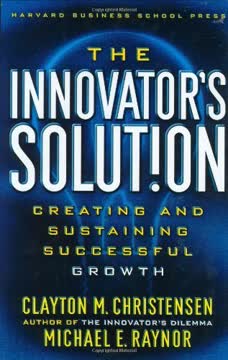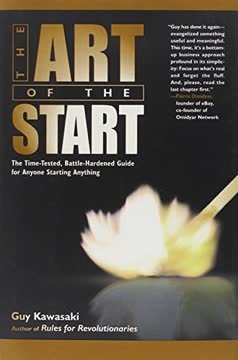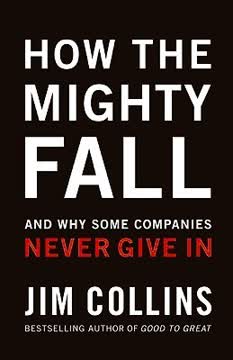Key Takeaways
1. Excellence in business is achievable through a focus on people, customers, and values
The achievements of an organization are the result of the combined efforts of each individual.
People-centric approach. Excellent companies prioritize their employees, customers, and core values above all else. They recognize that success stems from the collective efforts of motivated individuals working towards a common goal. These organizations create environments where employees feel valued, empowered, and committed to the company's mission.
Customer focus. Top-performing companies maintain an unwavering commitment to serving their customers. They consistently deliver high-quality products and services, anticipate customer needs, and go above and beyond to ensure satisfaction. This customer-centric approach builds loyalty and drives long-term success.
Values-driven culture. Excellent companies have a clear set of guiding principles that shape their decision-making and behavior at all levels of the organization. These values are not just empty words but are deeply ingrained in the company's culture and consistently reinforced through actions and policies.
2. Successful companies foster a bias for action and encourage experimentation
Do it, fix it, try it.
Action orientation. Top-performing companies prioritize action over analysis paralysis. They recognize that progress often comes from taking calculated risks and learning from experience rather than endlessly planning and deliberating.
Experimentation mindset. These organizations encourage their employees to try new ideas, even if they might fail. They understand that innovation stems from a willingness to experiment and learn from both successes and failures. This approach allows companies to adapt quickly to changing market conditions and stay ahead of the competition.
Key practices of action-oriented companies:
- Rapid prototyping and testing of new ideas
- Empowering employees to make decisions and take initiative
- Celebrating both successes and "intelligent failures"
- Maintaining flexible organizational structures that support quick pivots
3. Stay close to the customer: Prioritize service, quality, and reliability
If you see a man without a smile, give him one of yours.
Customer intimacy. Excellent companies maintain a deep understanding of their customers' needs, preferences, and pain points. They achieve this through regular, direct interaction between employees at all levels and customers.
Quality obsession. These organizations are relentless in their pursuit of product and service quality. They often go beyond industry standards to deliver exceptional value to their customers, building strong brand loyalty and reputation.
Reliability focus. Top-performing companies understand that consistency is key to customer satisfaction. They develop systems and processes to ensure reliable delivery of products and services, often backing their offerings with strong guarantees or warranties.
Customer-centric practices:
- Regular customer feedback loops and surveys
- Employee training focused on customer service excellence
- Continuous improvement of products and services based on customer input
- Empowering front-line employees to resolve customer issues
4. Productivity stems from treating employees as the most valuable asset
People can be themselves only in small, comprehensible groups.
Employee empowerment. Excellent companies recognize that their workforce is their greatest asset. They invest heavily in employee development, provide opportunities for growth, and create environments where individuals can thrive.
Trust and autonomy. These organizations trust their employees to make decisions and take ownership of their work. They minimize bureaucracy and micromanagement, instead fostering a culture of personal responsibility and accountability.
Small, effective teams. Top-performing companies often organize their workforce into small, manageable teams. This approach promotes better communication, collaboration, and a sense of belonging among employees.
Employee-focused practices:
- Comprehensive training and development programs
- Regular employee feedback and recognition
- Flexible work arrangements and work-life balance initiatives
- Promotion of a strong sense of community and shared purpose
5. Autonomy and entrepreneurship drive innovation and growth
The dignity and worth of the individual is a very important part, then, of the HP Way.
Intrapreneurship. Excellent companies encourage an entrepreneurial spirit within their organizations. They create systems and processes that allow employees to pursue innovative ideas and take calculated risks.
Decentralized decision-making. These organizations push decision-making authority down to lower levels of the company. This approach allows for faster response times and empowers employees to take ownership of their work.
Innovation support. Top-performing companies provide resources, time, and support for employees to develop new ideas. They often have formal programs or dedicated units focused on fostering innovation throughout the organization.
Entrepreneurship-fostering practices:
- Internal venture capital funds for employee-driven projects
- "Skunkworks" or innovation labs separate from day-to-day operations
- Regular innovation challenges or hackathons
- Recognition and rewards for successful innovative initiatives
6. Simple organizational structures and lean staffing promote efficiency
Structural form is irrelevant to us.
Simplicity focus. Excellent companies strive for simplicity in their organizational structures and processes. They avoid unnecessary complexity and bureaucracy that can hinder agility and decision-making.
Lean staffing. These organizations maintain relatively small corporate staffs, focusing resources on core business functions. They avoid the trap of creating large, self-perpetuating bureaucracies that can become disconnected from the company's primary mission.
Flexible structures. Top-performing companies design their organizations to be adaptable to changing market conditions. They are willing to restructure and reorganize as needed to maintain efficiency and effectiveness.
Organizational simplicity practices:
- Regular review and elimination of unnecessary processes and procedures
- Flat organizational structures with minimal management layers
- Cross-functional teams for specific projects or initiatives
- Empowerment of front-line employees to make decisions
7. Strong corporate cultures built on shared values lead to sustained success
I firmly believe that any organization, in order to survive and achieve success, must have a sound set of beliefs on which it premises all its policies and actions.
Culture as strategy. Excellent companies recognize that a strong corporate culture aligned with their values is a key driver of long-term success. They invest significant time and resources in shaping and maintaining their unique cultures.
Shared values. These organizations develop and communicate a clear set of core values that guide decision-making and behavior at all levels of the company. These values are consistently reinforced through actions, policies, and communication.
Cultural alignment. Top-performing companies ensure that their hiring, promotion, and reward systems are aligned with their core values and desired culture. This alignment helps maintain cultural consistency even as the organization grows and evolves.
Culture-building practices:
- Regular communication and reinforcement of core values
- Leadership development programs focused on cultural stewardship
- Employee recognition programs tied to living company values
- Rigorous hiring processes to ensure cultural fit
8. Leaders shape values and create meaning through hands-on management
The problem with much of the advice business gets today about the need to be more vigorously creative is that its advocates often fail to distinguish between creativity and innovation.
Visible leadership. Excellent companies are led by executives who are actively involved in day-to-day operations. These leaders regularly interact with employees at all levels, reinforcing the company's values and mission through their actions and decisions.
Value shaping. Top-performing leaders recognize their role in shaping and reinforcing the organization's values. They consistently communicate these values and demonstrate them through their own behavior.
Meaning creation. These leaders go beyond traditional management tasks to create a sense of purpose and meaning for their employees. They help connect individual roles to the broader mission of the organization, fostering engagement and commitment.
Hands-on leadership practices:
- Regular "management by walking around" to interact with employees
- Town hall meetings and open communication channels
- Personal involvement in key projects and initiatives
- Storytelling and symbolic actions to reinforce company values and culture
Last updated:
FAQ
What's In Search of Excellence about?
- Focus on Excellence: The book examines the practices of America's best-run companies to identify what makes them successful.
- Eight Attributes: It outlines eight key attributes that distinguish excellent companies, such as a bias for action and being close to the customer.
- Cultural Insights: The authors emphasize the importance of strong organizational cultures and values in driving long-term success.
Why should I read In Search of Excellence?
- Timeless Lessons: Despite being published in 1982, the management insights remain relevant today.
- Real-World Examples: The book includes numerous case studies and anecdotes, making the concepts relatable and actionable.
- Framework for Success: It provides a guide for leaders to foster a culture of excellence within their organizations.
What are the key takeaways of In Search of Excellence?
- Eight Attributes Defined: The book identifies attributes like a bias for action and productivity through people as hallmarks of excellent companies.
- Importance of Culture: A strong organizational culture is essential for long-term success, shaping behavior and driving performance.
- Action Orientation: Encourages organizations to foster a bias for action, promoting quick decision-making and adaptability.
What are the eight attributes of excellence in In Search of Excellence?
- A Bias for Action: Prioritize getting things done and encourage experimentation.
- Close to the Customer: Maintain strong relationships with customers to drive decision-making.
- Autonomy and Entrepreneurship: Empower employees to take ownership and encourage innovative thinking.
How does In Search of Excellence define a bias for action?
- Encouragement of Experimentation: Foster a culture where employees try new ideas and learn from experiences.
- Quick Decision-Making: Streamline processes to enable faster decision-making and implementation.
- Focus on Results: Prioritize tangible outcomes over extensive planning.
What role does customer focus play in In Search of Excellence?
- Customer-Centric Culture: Successful companies prioritize understanding and meeting customer needs.
- Feedback Mechanisms: Actively seek customer feedback to inform product development and service improvements.
- Long-Term Relationships: Foster close relationships with customers to anticipate their needs and adapt accordingly.
How does In Search of Excellence address the concept of productivity through people?
- Valuing Employees: Treat employees as valuable contributors, leading to higher productivity.
- Empowerment and Autonomy: Encourage employees to take initiative and make decisions.
- Positive Reinforcement: Recognize and reward employee contributions to maintain motivation and morale.
What is the significance of organizational culture in In Search of Excellence?
- Shared Values and Beliefs: A strong culture characterized by shared values is essential for driving performance.
- Alignment with Goals: Helps align employees with the company's goals and objectives.
- Adaptability and Resilience: Provides stability while allowing for flexibility in operations.
How do the authors of In Search of Excellence suggest managing ambiguity and paradox?
- Embracing Complexity: Accept that ambiguity and paradox are inherent in business.
- Balancing Opposing Ideas: Hold conflicting ideas in mind and integrate them into decision-making.
- Encouraging Open Communication: Create an environment where employees feel comfortable discussing uncertainties.
What is the concept of "Nichemanship" in In Search of Excellence?
- Tailoring to Niche Markets: Focus on specific market segments where a company can excel.
- Examples of Success: Companies like 3M excel by creating tailored products and services.
- Value-Based Pricing: Charge premium prices for specialized offerings to enhance profitability.
How does In Search of Excellence define "Champions"?
- Role of Champions: Individuals who advocate for new ideas and innovations within organizations.
- Support for Failure: Organizations must tolerate failure to encourage champions to take risks.
- Importance of Visibility: Champions thrive in environments where they are visible and can engage with others.
What are the "Simultaneous Loose-Tight Properties" discussed in In Search of Excellence?
- Balancing Control and Autonomy: Maintain firm central direction while allowing individual autonomy.
- Encouraging Innovation: Foster an environment where employees feel empowered to innovate.
- Cultural Discipline: A strong culture of shared values ensures that autonomy does not lead to chaos.
Review Summary
In Search of Excellence received mixed reviews. Many praised its groundbreaking insights on successful companies, highlighting themes like customer focus, employee empowerment, and innovation. Readers found the principles still relevant decades later. However, some criticized its dated examples, repetitive content, and lack of rigorous analysis. Critics noted that many "excellent" companies later struggled. Despite its flaws, the book is considered a classic that influenced business thinking and remains recommended reading for understanding organizational success.
Similar Books







Download PDF
Download EPUB
.epub digital book format is ideal for reading ebooks on phones, tablets, and e-readers.





